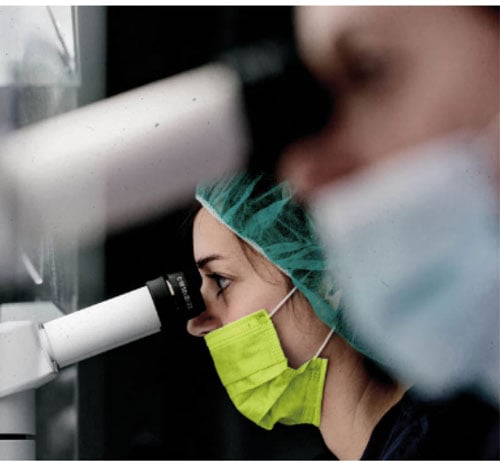Researchers used multiple methods to analyze mitochondrial genetic data and identify a mitochondrial microprotein associated with the risk of Alzheimer’s disease.
They discovered the SHMOOSE microprotein, which appears to have a physiological role in neurodegeneration.
The mutated version of the SHMOOSE microprotein, found in over 20% of Europeans, is linked to a higher Alzheimer’s disease risk. The finding opens new avenues for detecting, preventing, and treating Alzheimer’s disease.
Mitochondria are structures within the cell that convert energy from food into energy the cell can use. Each cell contains hundreds to thousands of mitochondria. Although most DNA is found inside the cell’s nucleus, mitochondria also contain a small amount of DNA, known as mitochondrial DNA.
In the early 2000s, researchers realized that short sections of mitochondrial DNA encode small (less than 100 amino acids long), biologically active proteins, now referred to as mitochondrial microproteins.
The first mitochondrial microprotein to be discovered was called “humaninTrusted Source.”There is growing evidenceTrusted Source that humanin and other similar mitochondrial microproteins play a role in several age-related conditions, including Alzheimer’s disease.
Alzheimer’s disease is the most common type of dementia, characterized by progressive mental deterioration. According to the CDCTrusted Source, as many as 5.8 million Americans were living with Alzheimer’s disease in 2020.The Cohen Laboratory at the University of Southern California (USC), one of the three laboratories that independently discovered humanin in 2003, has discovered a new microprotein connected to the risk of Alzheimer’s disease.
Their latest research, published in the journal of Molecular Psychiatry, revealed that a mutation in the newly discovered ‘SHMOOSE’ microprotein is associated with a higher risk for Alzheimer’s disease across four cohorts.
According to the researchers, nearly 1 in 4 individuals with European ancestry have the mutated version of the protein. Dr. Pinchas Cohen, professor of gerontology, medicine, and biological sciences and senior author of the study, told Medical News Today: “The implications are not immediate, but we believe that [relatively soon], the SHMOOSE SNP [single nucleotide polymorphism] genetic variant that is found in over 20% of Europeans may guide both the classification of individuals that are at risk for Alzheimer’s that may benefit from certain preventive measures and also could inform the selection of medical interventions that will become available in the near future.










